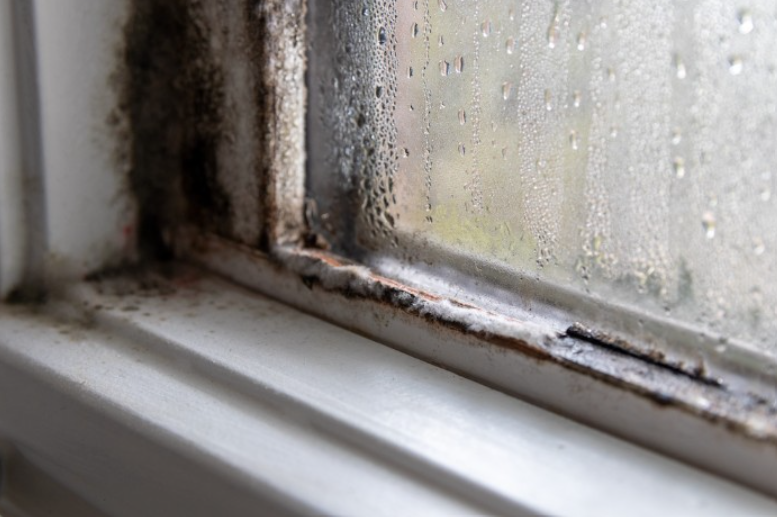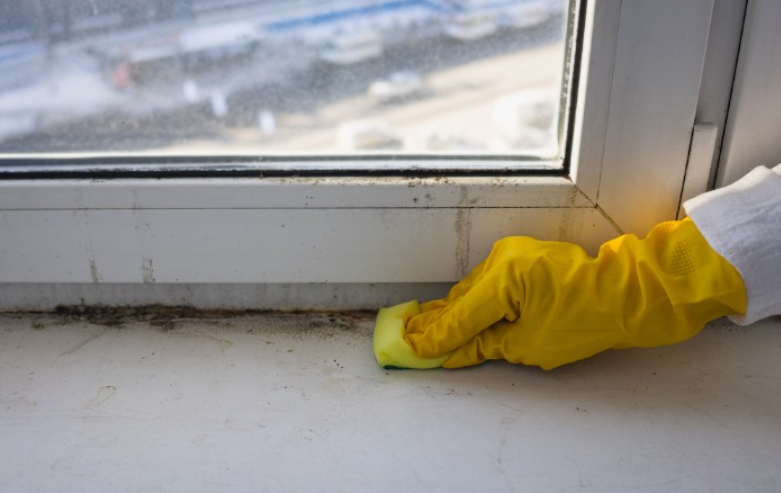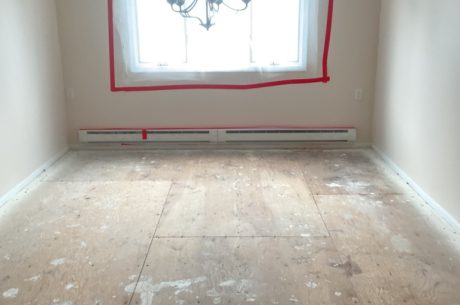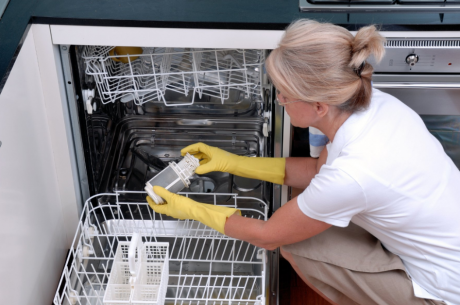How to Get Rid of Mold on Windows
Welcome to our comprehensive guide on preventing and removing mold on windows, authored by seasoned restoration professionals with years of hands-on experience in the field. As experts dedicated to safeguarding the integrity and longevity of your property, we understand the insidious nature of mold and its detrimental effects on both structural integrity and indoor air quality.
In this article, we delve into the proactive measures and effective strategies necessary to combat mold growth specifically on windows, offering invaluable insights and practical tips garnered from our extensive expertise. Whether you’re a homeowner, property manager, or restoration enthusiast, join us as we illuminate the path towards maintaining pristine and mold-free windows for years to come.
What is Mold?
Mold is a type of fungus that thrives in moist environments and reproduces through microscopic spores. It can appear in various colors, including green, black, white, or gray, and typically develops in clusters or patches on surfaces such as walls, ceilings, and windows. Mold growth often accompanies water damage or excessive humidity, making areas prone to leaks or poor ventilation particularly susceptible.
Beyond its unsightly appearance, mold poses significant health risks, especially for individuals with allergies, asthma, or weakened immune systems. Exposure to mold spores can trigger respiratory issues, allergic reactions, and exacerbate existing health conditions. Moreover, mold can compromise the structural integrity of buildings over time, causing decay and degradation of materials.
Preventing and promptly addressing mold growth is crucial to safeguarding both the health of occupants and the integrity of the property. Effective strategies include controlling indoor humidity levels, promptly repairing leaks or water damage, ensuring adequate ventilation, and implementing proper moisture management practices. Additionally, routine inspections and maintenance can help identify and address potential mold issues before they escalate.
In the next sections, we’ll delve deeper into practical techniques for preventing and removing mold specifically on windows, empowering you to maintain a healthy and mold-free environment within your home or property.
Causes of Mold on windows
Mold on windows can be attributed to several factors, primarily revolving around moisture accumulation and inadequate ventilation. Understanding these underlying causes is essential for effectively preventing and addressing mold growth:
Condensation: Windows are susceptible to condensation, especially during temperature fluctuations or in areas with high humidity levels. When warm, moisture-laden air comes into contact with cooler window surfaces, it can condense and create an ideal environment for mold growth. Condensation is more prevalent in poorly insulated windows or in rooms with inadequate ventilation.
Leaking Windows: Water intrusion through gaps, cracks, or faulty seals around windows can lead to moisture accumulation, fostering mold growth. Leaks may occur due to damaged caulking, deteriorated weather stripping, or compromised window frames. Additionally, poorly maintained or improperly installed windows are prone to leakage, exacerbating mold problems.
High Humidity: Excessive indoor humidity levels can contribute to mold proliferation on windows and surrounding surfaces. Activities such as cooking, showering, or drying clothes indoors can elevate humidity levels if not adequately ventilated. In humid climates, inadequate ventilation or air circulation can exacerbate moisture buildup, creating an ideal habitat for mold.
Poor Ventilation: Inadequate airflow around windows inhibits moisture evaporation and promotes stagnant conditions conducive to mold growth. Restricted ventilation may result from blocked air vents, closed windows, or obstructed airflow due to furnishings or window treatments. Insufficient ventilation impedes the dispersion of moisture-laden air, exacerbating mold issues.
Lack of Maintenance: Neglecting routine maintenance of windows, such as cleaning and inspecting for damage or deterioration, increases the likelihood of mold development. Accumulated dirt, debris, or organic matter on window surfaces provide nutrients for mold growth. Failure to address minor issues promptly can lead to more significant problems over time.

For Mold Removal Service in New Jersey, Call (877) 750-7876
How to Prevent Mold on Windows
Preventing mold growth on windows requires a proactive approach focused on controlling moisture levels, improving ventilation, and implementing proper maintenance practices. Here are several effective strategies to prevent mold on windows:
Monitor Indoor Humidity: Keep indoor humidity levels between 30% and 60% to inhibit mold growth. Use a hygrometer to measure humidity levels and employ dehumidifiers or air conditioners if necessary to maintain optimal conditions.
Promote Adequate Ventilation: Ensure proper airflow around windows by opening them regularly, especially after activities that generate moisture, such as cooking or showering. Use exhaust fans in kitchens, bathrooms, and laundry rooms to expel humid air outdoors and prevent condensation on windows.
Install and Maintain Exhaust Fans: Install exhaust fans in areas prone to high humidity, such as bathrooms and kitchens, to remove excess moisture from the air. Regularly clean and maintain exhaust fans to ensure optimal performance and airflow.
Use Ventilation Systems: Consider installing a whole-house ventilation system, such as a heat recovery ventilator (HRV) or energy recovery ventilator (ERV), to exchange indoor and outdoor air while minimizing heat loss or gain. These systems help regulate humidity levels and improve indoor air quality.
Insulate Windows: Properly insulate windows to minimize temperature differentials between indoor and outdoor surfaces, reducing the likelihood of condensation. Use weather stripping, caulking, or insulating films to seal gaps around windows and prevent air leaks.
Address Water Intrusion: Regularly inspect windows for signs of leaks, such as water stains, moisture accumulation, or deteriorated seals. Promptly repair damaged caulking, weather stripping, or window frames to prevent water intrusion and mold growth.
Clean Window Surfaces: Regularly clean window surfaces using a mild detergent or vinegar solution to remove dirt, dust, and organic matter that can serve as nutrients for mold growth. Pay attention to window tracks, sills, and frames, where moisture and debris can accumulate.
Reduce Indoor Plants: Limit the number of indoor plants near windows, as excessive moisture from watering or plant transpiration can contribute to mold growth. Ensure proper drainage and ventilation around plants to minimize moisture accumulation.
Use Mold-Resistant Materials: Consider using mold-resistant paint or window treatments in areas prone to mold growth. These materials contain additives that inhibit mold and mildew growth, providing an additional layer of protection for windows and surrounding surfaces.
Maintain Outdoor Drainage: Ensure proper drainage around the exterior of windows to prevent water from pooling near the foundation or infiltrating the building envelope. Keep gutters, downspouts, and drainage systems clear of debris to facilitate water flow away from the structure.
How to get rid of condensation on windows mold
Removing condensation and mold from windows requires a combination of moisture control, thorough cleaning, and targeted mold remediation. Here’s a step-by-step approach to address condensation and mold on windows effectively:
Identify and Address Moisture Sources: Determine the underlying causes of condensation, such as high indoor humidity levels, inadequate ventilation, or water intrusion. Take steps to mitigate these factors by using dehumidifiers, improving ventilation, and addressing any leaks or water damage around windows.
Improve Ventilation: Increase airflow around windows by opening them regularly, using exhaust fans in moisture-prone areas like bathrooms and kitchens, and installing whole-house ventilation systems if necessary. Enhanced ventilation helps reduce moisture buildup and minimize condensation on windows.
Clean Window Surfaces: Thoroughly clean window surfaces to remove existing condensation, dirt, and mold. Use a solution of mild detergent and water or a mixture of vinegar and water to wipe down window panes, frames, sills, and tracks. Scrub gently to remove mold stains and debris.
Use Mold Removal Products: For persistent mold growth, use commercial mold removal products or homemade solutions like a mixture of water and hydrogen peroxide or distilled white vinegar. Apply the solution to affected areas, allow it to sit for several minutes, then scrub with a brush or sponge. Rinse with clean water and dry thoroughly.
Apply Mold Inhibitors: After cleaning, apply a mold inhibitor or antimicrobial spray to window surfaces to prevent mold regrowth. These products help to create a protective barrier against mold spores and inhibit their proliferation in the future.
Inspect and Repair Seals: Check window seals, caulking, and weather stripping for damage or deterioration. Replace any worn or damaged seals to prevent water intrusion and reduce the risk of condensation and mold growth. Ensure that windows are properly sealed to prevent air leaks and moisture infiltration.
Monitor and Maintain: Regularly monitor window surfaces for signs of condensation or mold regrowth, especially during periods of high humidity or temperature fluctuations. Address any issues promptly to prevent mold from spreading and causing further damage.
Address Indoor Humidity: Continuously manage indoor humidity levels to prevent condensation and mold growth. Use a hygrometer to monitor humidity levels and adjust ventilation and dehumidification systems as needed to maintain optimal conditions.
Consider Window Treatments: Install insulating window treatments, such as thermal curtains or insulating window films, to reduce temperature differentials and minimize condensation on windows. These treatments help to regulate indoor temperatures and humidity levels, reducing the risk of mold growth.
Call Us for Expert Mold Removal in New Jersey – (877) 750-7876
Living in a mold-infested home can be a nightmare. Fortunately, PuroClean Emergency Recovery Services New Jersey is here to help. With years of experience and a team of skilled professionals, we have the expertise you need to eliminate and prevent mold in your home and give you a fresh start. From identifying the cause to implementing effective remediation strategies, our team has the knowledge and tools to make your home mold-free. Don’t put off your mold concerns any longer. Get in touch with us today at (877) 750-7876 and start enjoying a cleaner, fresher, and healthier living space!
In conclusion, By following these steps and implementing preventive measures to control moisture and improve ventilation, you can effectively remove condensation and mold from windows and prevent their recurrence. Regular maintenance and vigilance are key to preserving indoor air quality and the integrity of your windows.




 PuroClean Emergency Recovery Services
PuroClean Emergency Recovery Services